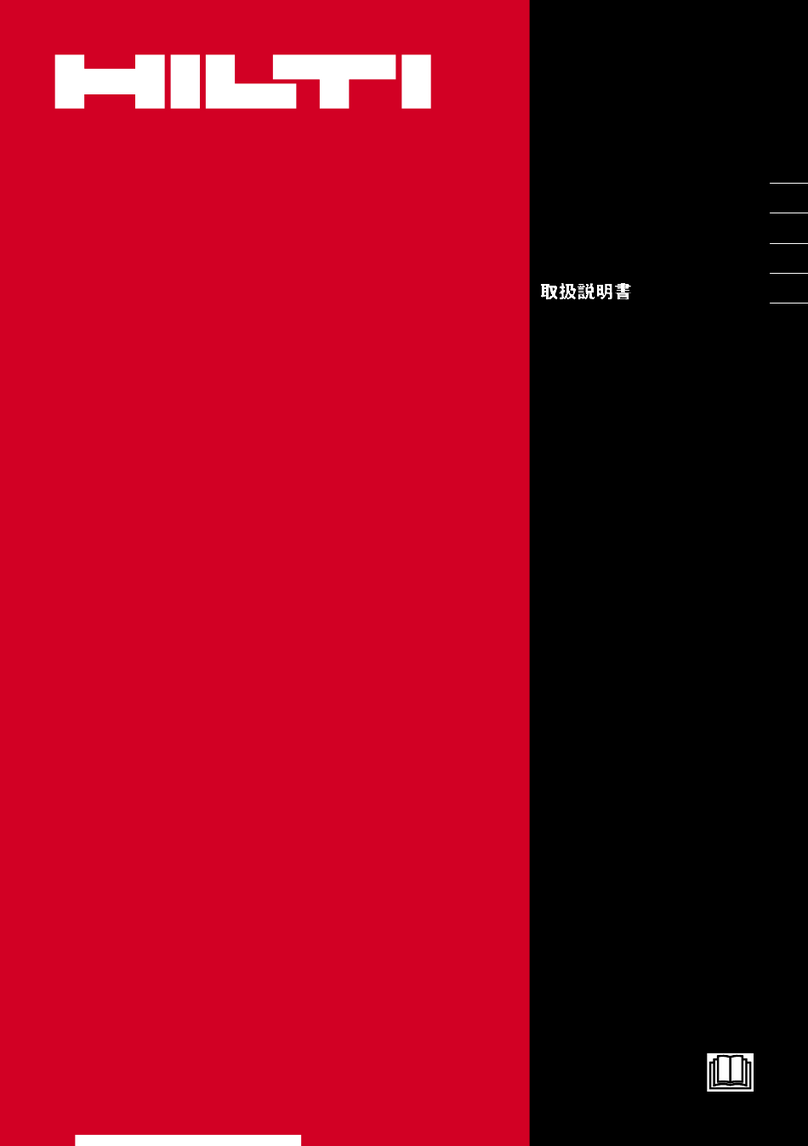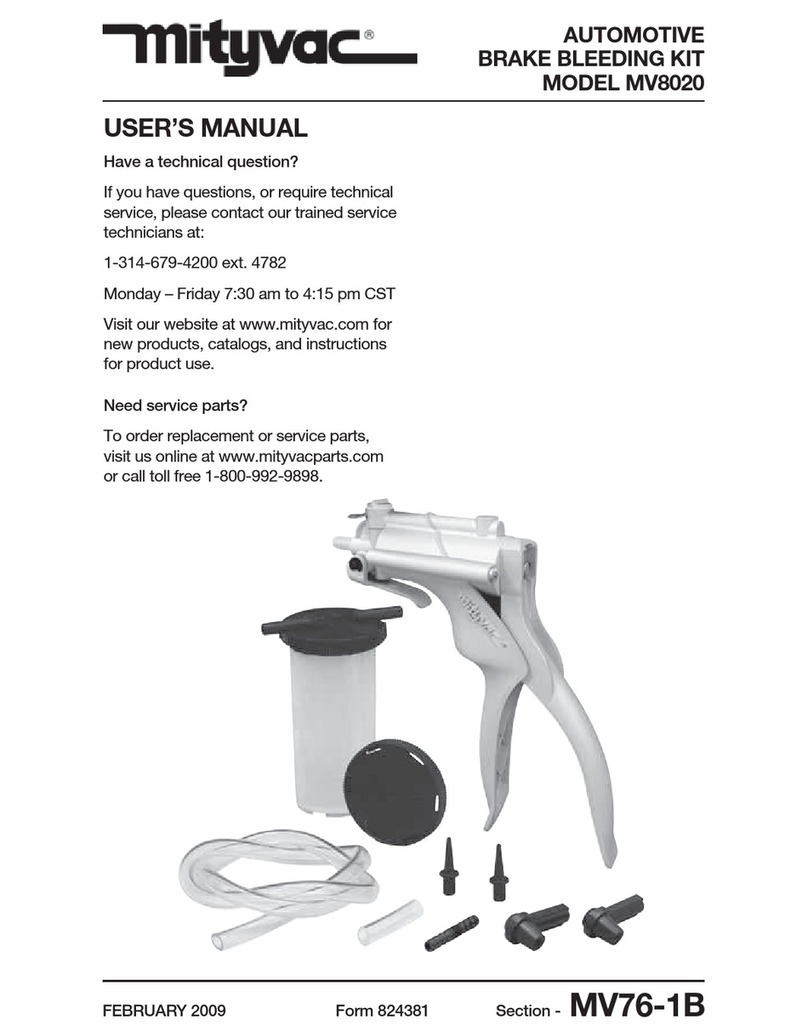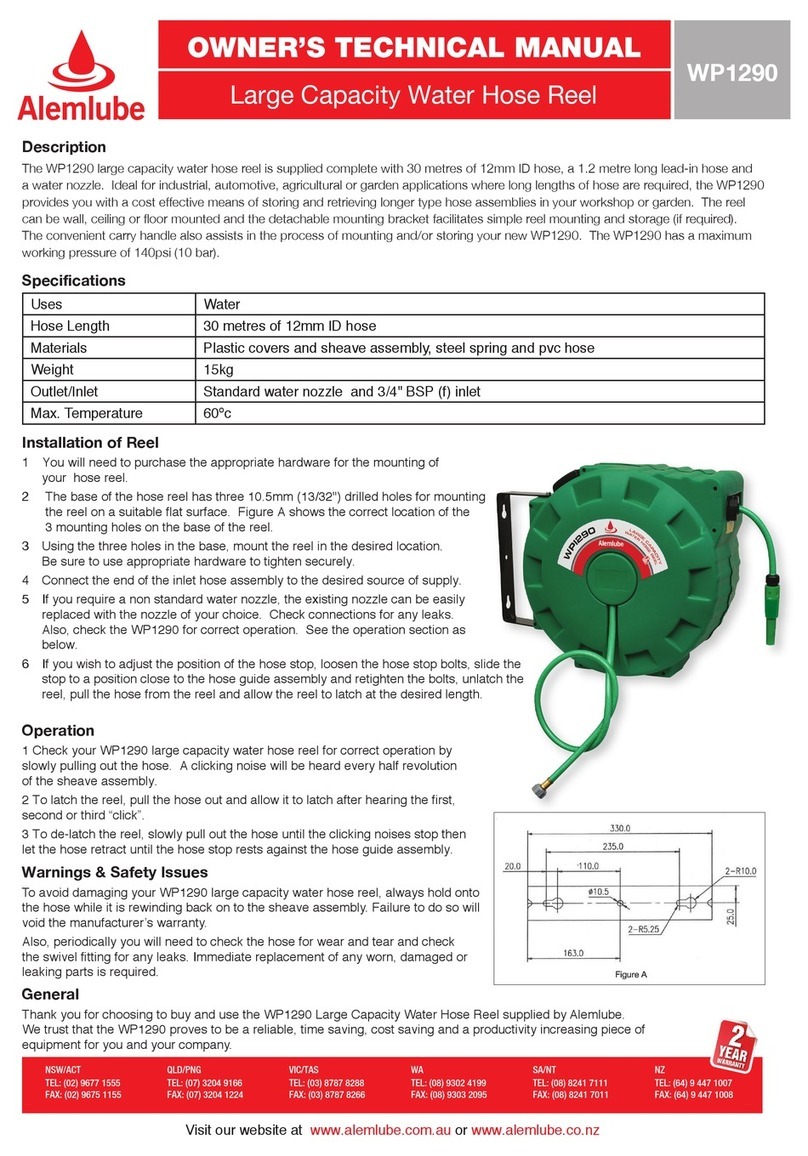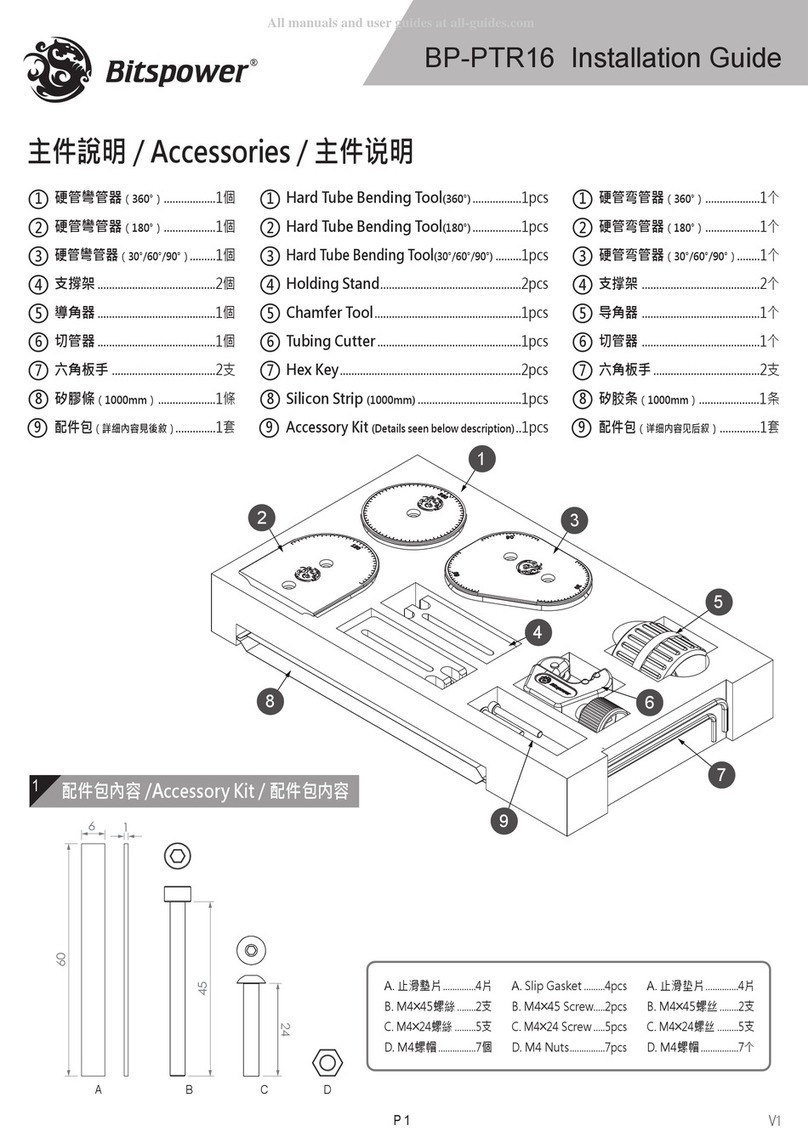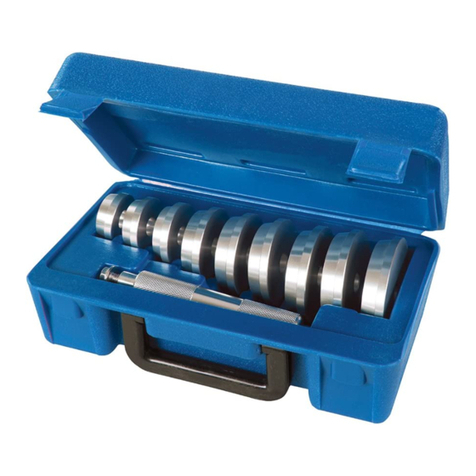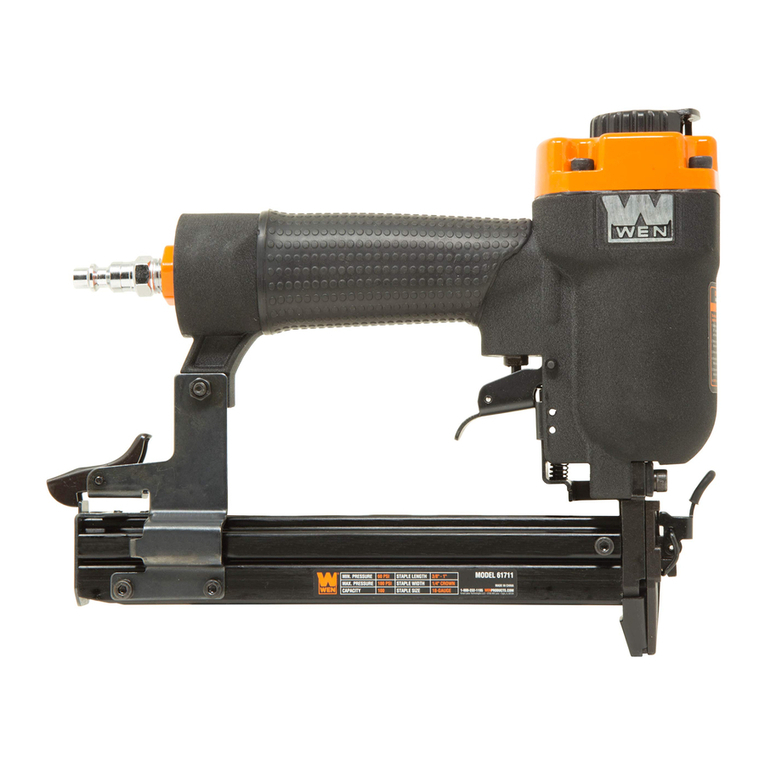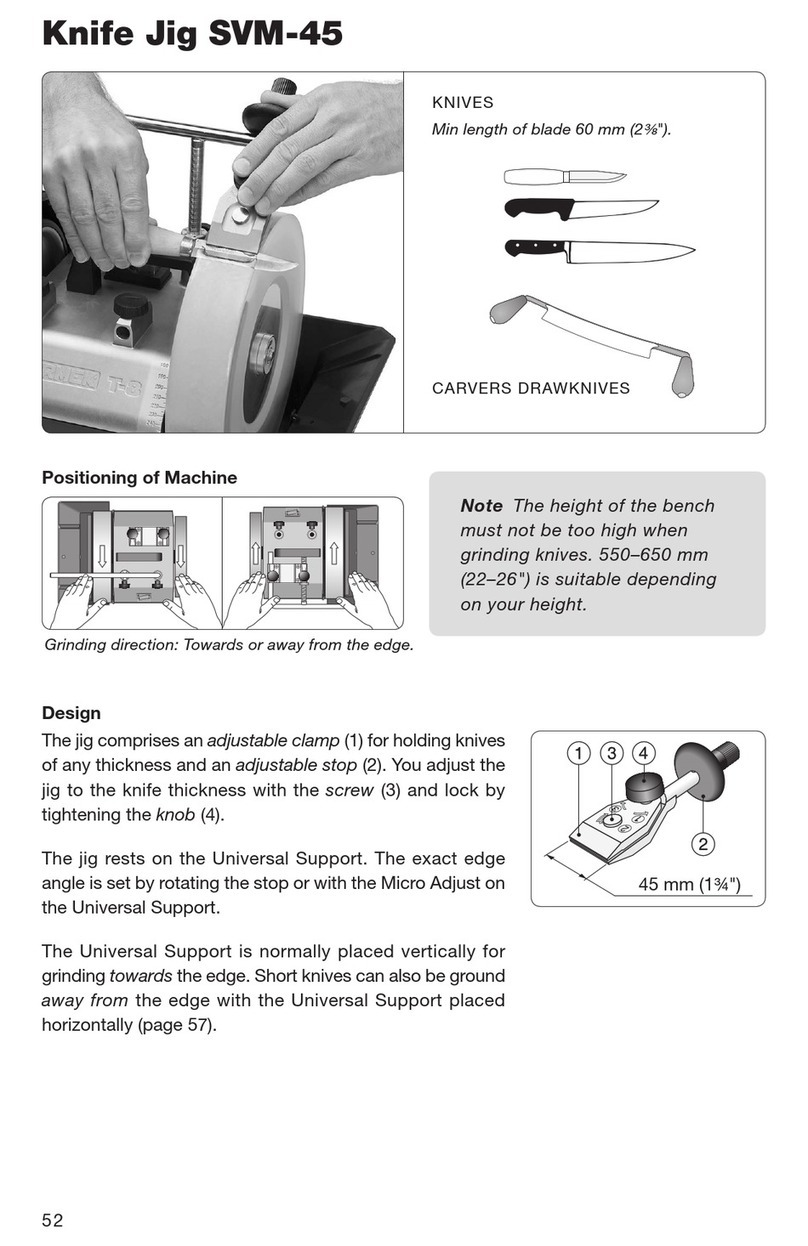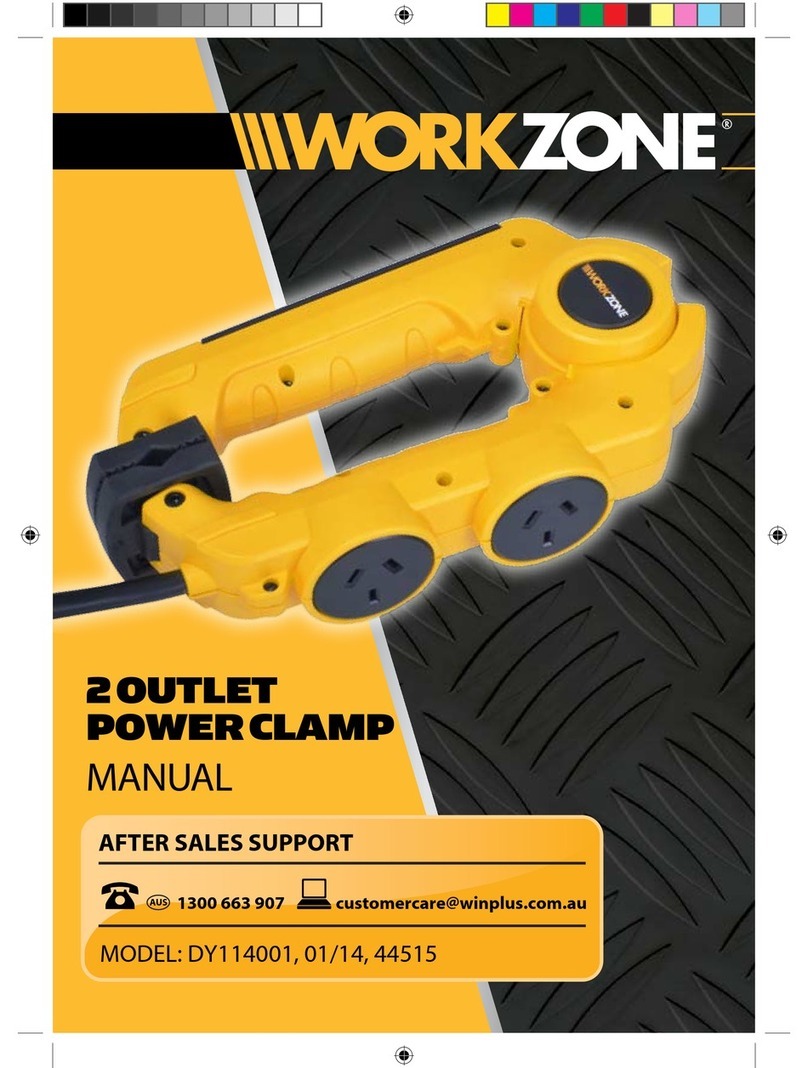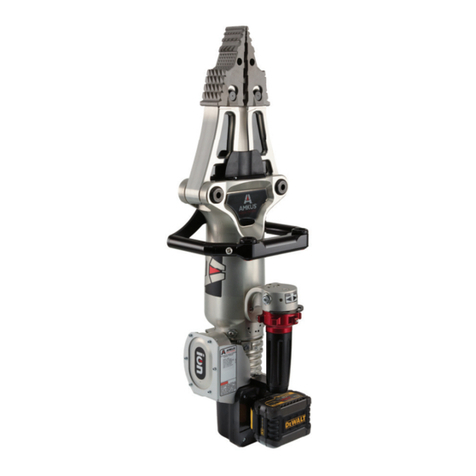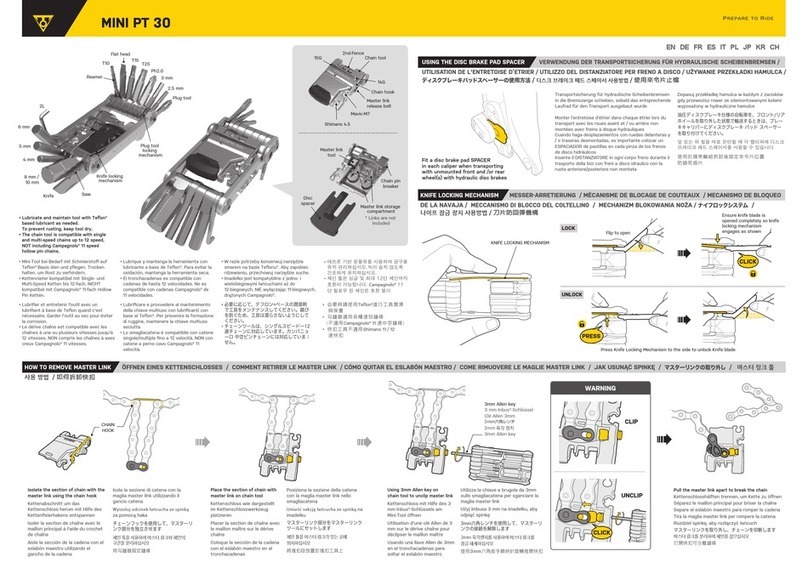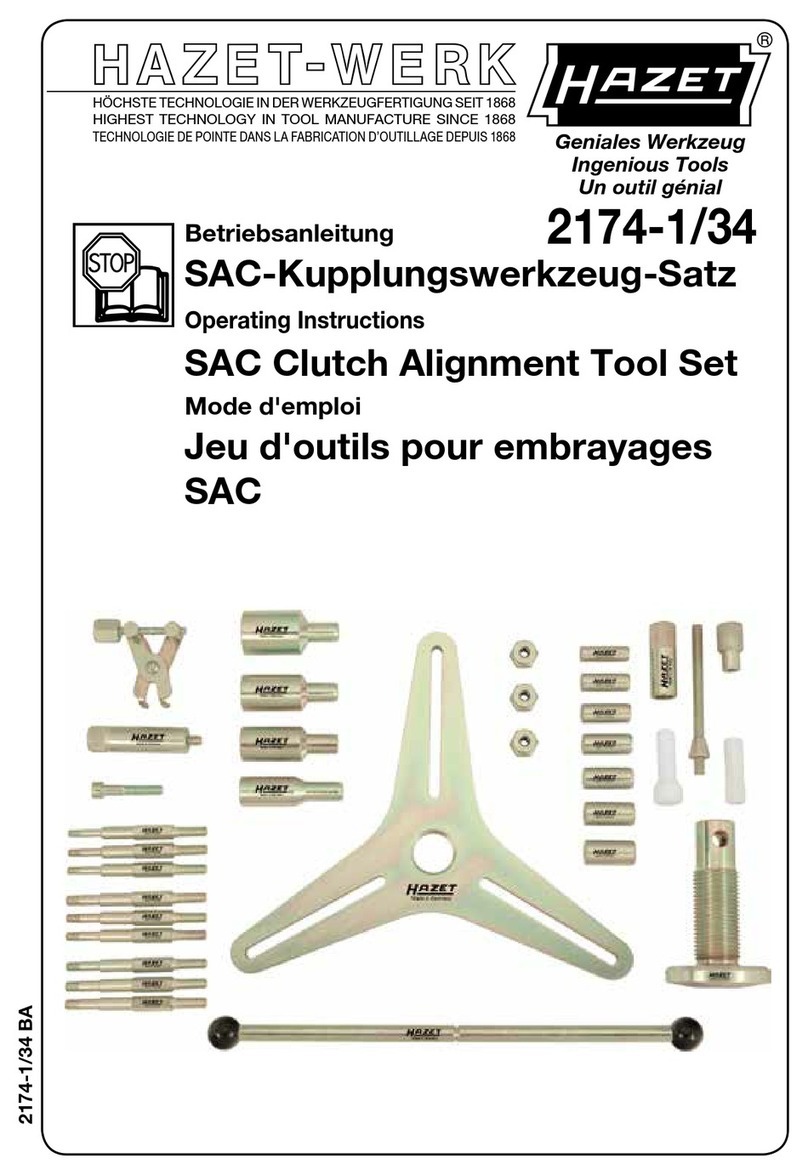TRUArt Pyrography Pen User manual

Copyright 2020 TRUArt LLC
TRUArt®
60W Pyrography Pen
User Manual

Copyright 2020 TRUArt LLC
2
Copyright 2020 TRUArt LLC
Table of Contents
Foreword 3
Warranty 3
Operation Safety 4
Features 5
Using Your Pyrography Pen 6
Cleaning Tips 7
Annealing of the Tips Before First Use 7
Tips and Their Uses 8
Common Issues 14
Extension Cords/Cables 15
Accessories 16
Adjusting Collets to Fit Larger Tips 18
Going About Your First Project 21
Stencils 25

Copyright 2020 TRUArt LLC
3
for purchasing our
TRUArt Wood Burner Bundle!
We stand behind all our products and if you
are not 100% satisfied, simply email us at
hello@truart.co and we will make it right for you!
Warranty Informaon
This manual contains VERY IMPORTANT
information about your wood burning kit.
Please read it carefully.
Your TRUArt pyrography tool is guaranteed to operate properly for a period of three (3)
years on the power supply, six (6) months on handpieces, and ninety (90) days on all
interchangeable tips/nibs. This warranty provides for repair or replacement, at the
manufacturer's option, of any defective components. This warranty is limited to the
actual cost of repairs and will not cover shipping costs or any consequential damages
resulting from failure of the unit or its components to perform as stated. All warranty
work must be done by the manufacturer. The manufacturer will not cover the costs of
repairs done elsewhere.
Warranty will be voided if unit has been tampered with, altered or repaired by
unauthorized persons or companies. In the event that your burner or handpiece should
need service, our average repair turnaround time is only one day in the shop. To receive
in- or out-of-warranty servicing, please reach out to us at hello@truart.co.

Copyright 2020 TRUArt LLC
4
TRUArt Pyrography Pen
Register your purchase at https://truart.co/register to get
access to complimentary tutorials, stencils and updates.
Symbols used in this manual
Operaon Safety for your Pyrography Pen
1. Do not use excessive pressure when wood burning. Learn to adjust the heat seng to
make it work you for instead of stressing the pen and p.
2. Never touch metal objects with a p - this can destroy the unit due to electrical
shortcut.
3. Use care and common sense in how you clean and/or re-sharpen the ps. Use a leather
strop or bugging wheel with ne polishing rouge and learn to work at the lowest
temperature necessary to achieve the result you want.
4. Always keep the unit out of the reach and away from children. Tips are sharp and very
hot and will burn skin and esh easier than wood.
5. Whenever you burn, assume a comfortable and relaxed posion, with respect given to
arm, head, body and leg posion. For example, if you begin to feel stress in the back of
your neck, change the angle you are holding the work, or adjust the height of your seat
to relieve any strain.
6. Always work with sucient quanty and quality of light. Use a shadow light (a strong
light to the le of the work – if you are right handed) that creates a shadow with each
stroke, making it easier to place strokes.
7. Turn the unit OFF whenever you leave it – not only will you avoid a re hazard, but you
will prolong the life of the burning p. Most burning units will heat the p to

Copyright 2020 TRUArt LLC
5
operaonal temperature in less than thirty seconds – me well spent when considering
the possible alternaves that could occur by not turning the unit o.
8. If the handpiece begins to make noise and stops heang, turn it o and re-ghten the
p holder using pliers. If that does not help - turn o the tool and replace p. If the
handpiece sll does not work with the replacement p, it might be defecve - please
contact us to arrange repair and/or replacement.
9. If a unit begins to make noise or buzz, turn it o, allow the pen to cool, and change
pens. Usually, an occurrence such as this is indicave of a shorted pen. If the noise
connues with a new pen, you should contact us to ascertain the cause of the problem
and/or make arrangements to return the unit.
10. Keep wood scraps available to check heat sengs and to pracce strokes. To maintain
uniformity, the test piece should be the same type of wood as the work piece you will
be working on.
Features

Copyright 2020 TRUArt LLC
6
Using your Pyrography Pen
1. Plug the Power Cord (#4) into an electric outlet and turn on the On/O Switch (#2) on
the side to heat up - it usually takes less than a minute for the tool to become hot.
2. Set the round Voltage Adjustment Knob (#3) to the desired voltage.
3. Voltage Display (#12) will show currently selected voltage. Depending on the p used,
dierent voltages will produce dierent temperatures. Make sure to use burn-test on a
piece of wood to conrm correct voltage seng.
4. If necessary, use the Voltage Fine Tuning Pot (#13) to ne tune voltage regulator—with
the help of a small at-head screwdriver—for opmal use with your mains electricity. A
typical case is when voltage is too high on the lowest seng or too low on highest.
When ne tuning, you should try to achieve 15V on lowest seng and 110V on max
seng.
5. Use the Handpiece Switch (#11) to select Handpiece I or Handpiece II (#6).
6. Always place the handpiece into the Handpiece Holder/s (#10) so the ps do not touch
other objects when not in use.
7. Hold the handpiece as you would a large pencil.
8. Always pracce a new technique on a sample piece before starng a new project.
9. The tool comes with various ps (#9). Some ps are the same as they are most oen
used and serve as replacements.
10. To clean the ps during use, use the wet Sponge (#8). To wet the sponge, pour some
water on it making sure it is suciently wet but not swampy.
11. Use a pair of pliers to ghten the ps in the Tip Holders (#7). If you try to ghten the p
holder by hand, there is a chance you do not ghten it well enough and the tool will not
10. Handpiece Holder
11. Handpiece Switch
12. Voltage Display
13. Voltage Fine Tuning Pot
14. Pliers
15. Cleaning files
16. Small steel brush
17. Tweezers
1. Power supply
2. On/Off Switch
3. Voltage Adjustment Knob
4. Power Cord
5. Terminals
6. Two Handpieces
7. Tip Holders
8. Sponges
9. Wire Tips and Box for Tips

Copyright 2020 TRUArt LLC
7
work or it might emit a buzzing sound. In such events, re-ghten the p holder with a
pair of pliers. Avoid contact with p holder or ps while tool is hot or else severe burns
will happen.
Most burning can be done at lower temperatures, there is no reason for a lot of smoke (or re!)
to come o your work. About 700 0F will give a nice “toast” to your work. In some cases, if you
burn too hot, paint adhesion can be a problem as the pores in the wood are sealed shut.
Burning at a lower cooler temperature will also help avoid residue buildup on your ps.
However, there may be situaons where you will need extra heat (power) to undercut or to
relief a carving detail and may require as much as 1500 0F or more. If you plan to do feather
inserts for instance, the unit has to deliver the extra power necessary to accomplish the deep
sloed cuts required to accept the pre-shaped feather inserts.
Cleaning Tips
One method used to clean and restore tips is by using a cleaning pad that has a very fine
abrasive grit (600/800) bonded to both sides of a foam core pad. This is fine enough to clean
your tip without removing metal and is still enough to redress a dulled tip.
Another method is by using a leather strop to sharpen and buff out an edge. The strop can be
treated with a bit of Neatsfoot oil, a very small amount of polishing paste or extremely fine
honing compound. Use care - too little is better than too much when it comes to these tips.
Work the tip cold and on its side. Use gentle draw strokes with a finger lying over the upper side
of the tip to support it. The stropping also gives it a nice polish.
Additional information on cleaning tips can be found under Accessories (Page 12).
Annealing of the Tip Before First Use
Annealing is a simple and quick process of heating metal or glass and allowing it to cool slowly in
order to remove internal stresses and toughen it. Here’s how you can do it:
1. Put a pen with installed tip into the holder
2. Turn on the power and set the voltage adjustment to the Max
3. Let the tip reach red-hot temperature and then turn the power off
4. Let it cool down naturally until cold to the touch (this will take few minutes)
5. Repeat it 2-3 times
When done properly, this will help with removing extra metal stress in the tip.

Copyright 2020 TRUArt LLC
8
Tips and Their Uses
Your new TRUArt pyrography pen comes with a variety of burning tips. To get the most from
your kit, you can use the guide below prepared by Andrea of Pate’s Pyrography to get an idea of
what they are for.
Flat tip - flat tip that has a slight bend at the neck of the tip. This tip can be used to create sharp
lines if using the top portion with the bend facing down towards your burning. Flip the tip to the
flat side and it works great to burn a nice blended shade.
Small flat tip - this tip has a curved head and a flat backing. There is a slight bend at the neck of
this tip. Much like sample 1, this is a good tip to use for shading. This works well for creating
short fine lines for doing hair detail as well.

Copyright 2020 TRUArt LLC
9
Copyright 2019 TRUArt LLC
Rounded p – This is a “generic” or universal p. This can be used to create sharp lines and
shade well using the appropriate pressure and temperature.
Point p – This has a very pointy edge and works great when you need to make very ne lines.
The p is very sharp, so you need to be cauous of the amount of pressure you use. This is
suitable for any shading or solid burns.

Copyright 2020 TRUArt LLC
10
Curve p – This has a curve on one side of the p. When using the pointy side, you can achieve
ne lines. If you use the backside of the p where the curve straightens, you can achieve a good
dark solid burn that works well for darkening a background. If you use the curved side of the p
you can create more of a shaded burn. The curve also makes it easy to make lines along
unnished or rough surfaces since it doesn’t snag on the surface.
Scale or Horseshoe p – somewhat similar to the Curve p, the curves are great for shading and
creang solid backgrounds. The top poron can also create ne lined details. With some
pracce and correct temperature and control, this can also be used as a stamp to create scales.

Copyright 2020 TRUArt LLC
11
The following are some of the special ps available on our website.
The ball p is excellent for making nice sppling
paerns. It also works great for creang smooth
wring.
These ps work great for creang smooth lines and
are also ideal for script works.

Copyright 2020 TRUArt LLC
12
The spoon shaped p works wonders to create a smooth
burn. It also works great for shading and even script
work and the top part of the p creates a ne line. This is
a great p for mulple funcons.
This p works well to create sharp solid lines. Using the
side of the p creates smaller ne lines
This p is perfect for creang sharp ne lines. This would
be for hair detail for creang thin ne edges.

Copyright 2020 TRUArt LLC
13
This horseshoe-shaped p Is ideal for shading.
This allows you to create a so even burn and
allows you to add shadows and depth to your
work with a consistent shade throughout. You
can create a very thin line using the top
poron of the p to add ne details. You can
also use the p as a stamp and create layers of
scales.
This p Is great for making sharp ne lines

Copyright 2020 TRUArt LLC
14
Common Issues
We have been selling this product for several years and customers love it. So far, there are only
three (3) main issues that other customers have brought to our aenon. Please read below on
how you can avoid the same issues.
Swapping ps into a dierent burning pen
Some customers contact us aer bending a p to its breaking point because they want to t it
into another brand of wood burning pen. Although it may be possible to swap your ps into
another wood burning brand, it might take a lot of dexterity and precision bending to do so—
not to menon eort– and there’s no guarantee that they would work well if they eventually t.
The ps provided with your set performs best when used with the TRUArt brand but if you
already own another brand of wood burning pen and would like to use the TRUArt ps on your
old burning pen, it is strongly suggested that you create your own ps from scratch using Ni-
chrome wire. We may be able to help you acquire some if you would contact us through email.
There are many videos online that teach how to make your own pyrography ps from Nichrome
wire.
Sporadic heang
Although very rare (if ever), the p does not heat up properly (i.e. slow heat up at maximum
voltage seng). If this happens, check if the p is not broken or has a minute crack. Also check
that the p holders are screwed in ght on the p and that all power cables are connected
properly. Nothing should be loose.
If this sll does not x the problem, please contact us at hello@truart.co.
No heat
Very few have reported that the pen does not heat up. Please perform the checks previously
menoned and if it is sll the same, it might be that you received a defecve burning pen.
Please contact us at hello@truart.co as soon as possible about it.

Copyright 2020 TRUArt LLC
15
Extension Cords/Cables
Extension cables are commonly used with our wood burners. Ideally though, you would not
want to use any. However, if you must, make sure it is:
1) As short as possible.
2) At least 16 GA (wire gauge)
3) Has three conductors (see image below)
On a technical side, the pyrography tool itself will draw just under 1 ampere in normal operaon
mode and has an internal protecon against short circuit. In the unlikely event it fails, the
extension cord needs to be able to handle more than 1 ampere. We strongly advise that you get
one with a capacity of at least 10 amperes.
Ampere rang of the extension cord changes with the length of the run, so two 10 amps cords
used together will have less than 10 amps capability.

Copyright 2020 TRUArt LLC
16
Accessories
Files
The various shaped files are mainly for
cleaning and refurbishing the wire tips. It
helps clear out carbon deposits on the tip.
These carbon deposits occur naturally
when burning on wood.
Pliers
The pair of pliers are used mainly for tightening and
loosening the pen’s 2 nuts over the collets that hold the
wire tip (see arrows on image below).

Copyright 2020 TRUArt LLC
17
Sponge
Placed into special slots in the pen
holder (see arrow on image below),
water is added to make it damp. During
work, tips are occasionally wiped on
them to get rid of burned materials.
Tweezers
Tweezers are used to handle tips easily. This is especially handy
when selecting tips from within the container (see images
below).

Copyright 2020 TRUArt LLC
18
Adjusng Collets to t Larger Tips
This guide shows how to adjust your TRUArt Stage 2 60W pyrography pen’s collets to fit
larger (thicker) or smaller (thinner) wire tips. Universal wood burning wire tips
generally come in three sizes and can be thicker, thinner, wider, and/or longer than
standard tips:
•16 Gauge (GA) - 1.29 mm - Thick (Needs initial collet adjustment)
•18 GA - 1.02 mm - Perfect fit (No need for any adjustments)
•20 GA - 0.81 mm - Thin/Fine wire (Needs tightening with pliers)
Fitting thicker wire tips into your wood burner collets
The thicker 16 GA tips last longer and are best for prolonged usage as they do not wear
out easily after countless cleaning. However, you will need to initially adjust your
pyrography pen’s collet to fit them. You would only need to do this once after which it
becomes much easier to switch between the different types of wire tips.
Step 1
Unscrew the locking nuts (arrows)
from the collets
Step 2
Push the universal tip into the collets
(red circle) making sure that they are
aligned straight into the collets as
much as possible. Some force may be
required to do that.

Copyright 2020 TRUArt LLC
19
Step 3
Pull out the tip, screw in the locking
nut onto the collets leaving it loose
(arrows), and insert the tip back in
again (big arrow).
Step 4
Tighten the locking nuts and your pen
is ready for some serious wood
burning.
Fitting thinner wire tips how into your wood burner collets:
You can expect the thin wire tips (20 GA) to be slightly loose in the pen. This is
especially more pronounced if you have adjusted your pen to fit larger tips already (See
Fitting thicker wire tips into your wood burner collets)
If tips are too loose or are not properly inserted, you will hear a buzzing/vibrating
sound coming from your pen. This can also short out your pen.
To avoid this, follow these easy steps using the tools already provided in your TRUArt
pyrography kit

Copyright 2020 TRUArt LLC
20
With the provided pair of pliers, cut a short length of the end of the tips to equal lengths
and to remove any minute factory blemishes on them.
Next, with the file provided in your kit, file off the ends
of the tips to smoothen out any irregularities that might
snag when inserting the tip into the pen’s collets.
Once inserted in the pen, be sure to tighten the collets
with the pair of pliers for proper contact.
Universal tips are designed to go into several models
of wire tip burners. With these tips, it is advisable to
make sure that the tips resemble the original form as
much as possible. You can file/cut/adjust those tips in
any way necessary, but the main goal is to avoid any
buzzing noise emitted by the pen.
Table of contents
